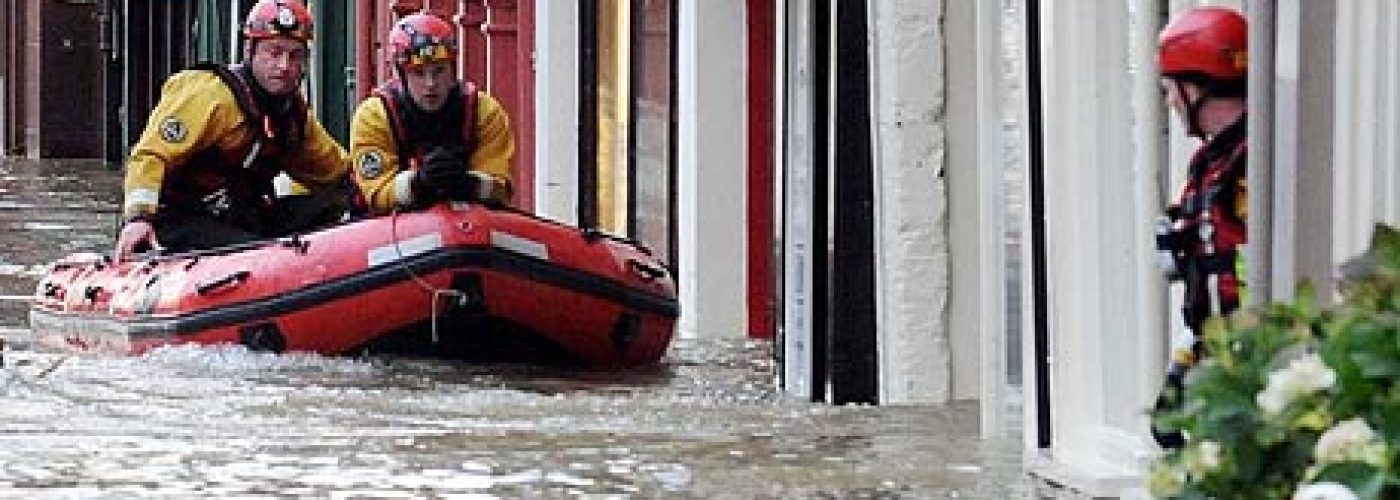But this isn’t the first time that we’ve been ravaged by floods which have had an enormous and devastating impact on local communities – so how has this happened, and what can we learn from events like these that are becoming a regular part of UK weather?
ESS, a UK-based environmental waste treatment and recycling firm, take a look at the flood’s impact and what’s happening for the future.
What’s Happened?
It’s something we’re all aware of; it’s been covered extensively in the last two or so weeks, and it’s still affecting homes, business and local communities.
In essence, Storm Desmond has been battering the UK with rough weather and, in particular, ravaging the north of England with high winds and heavy rain – resulting in widespread flooding in a number of local areas.
Severe weather warning for rain has been issued. Stay #WeatherAware at https://t.co/LohpJi9n9A pic.twitter.com/I6ZpcVAmy1
— Met Office (@metoffice) December 6, 2015
For example, a record breaking 341.4mm of rain fell at Honister in the Lake District, 3,500 homes have been flooded and transport links (including trains and road routes) have been cut and are still affected at time of writing.
What Was The Impact & Fallout?
Tens of thousands of people left without power and thousands with flooded homes, not to mention local businesses, are just part of the storm’s impact in the north. Police forces, other emergency services and British army have all been helping, while local communities were also urged to pull together to support each other.
Currently, the cost of this recent bout of flooding is unknown, but last week George Osborne announced a £50m flood fund to cover costs as a result of the damage left in Storm Desmond’s wake.
A report put to parliament last year put the average annual cost of damage as a result of flooding across the UK at £1.1bn; while there hasn’t been any indication yet on wider costs of the flooding this December it seems like the impact, damage and widespread effects aren’t getting any better, so it’s reasonable to say that this figure will (at least) be consistent for this year’s flooding.
At the time of writing towns, villages and local communities are all still dealing with the impact in their own way. There are still some areas without power, and residents’ homes may still not be fit to live in, but these are short-term issues – for the time being.
What Can We Learn & What Are The Next Steps?
“If the government is serious about infrastructure, then flood defences should be a greater priority than HS2 or another airport runway” – The Guardian (07/12)
It goes without saying that current strategies, plans and defences need to be improved; these events aren’t one-off and unexpected. The same report previously mentioned states how increasing spend on flood defences won’t be wasted, and can help to offset the cost of damages by reducing the impact of flooding.
The two big statements coming out of the impact of the flooding are an increase in funding for flood defence costs and a continued approach on tackling climate change; although the Met Office have stated that the most recent flooding can’t be verified to being linked to this.
Tom Burke, chairman of environmental group E3G, suggests that the current spend alone isn’t enough. On his own website, Mr Burke said: “Each time millions of pounds were spent improving flood defences in the region. Each time the defences were overwhelmed by the next ‘unprecedented’ event.”
He added: “The question the government really needs to answer is why have we had so many unprecedented events in so short a space of time. How many times does it take to set a precedent?”
It seems that these plans are already being suggest to government, with MP Elizabeth Truss addressing the House of Commons last week on plans for further investment in flood defences.
In her statement she said: “Since 2009 we have invested £45million in new defences in Cumbria. But we will need to learn lessons and reflect on what we can learn from this extreme weather event.
“We are investing £2.3bn in 1500 schemes throughout the country that will better protect 300,000 homes and the Spending Review has also confirmed that we’re protecting flood maintenance spending throughout this Parliament as well as capital spending.”
So will this be enough? Last year’s report to Parliament seems to suggest that the cost of flooding as a result of damage cause is only likely to increase enormously in the long term; the report suggest a rise to as much as £27bn per year by 2080 if action isn’t taken.
One thing is clear, though, and it’s that what is currently in place needs improvement – more investment from local government and more funding from central government will allow this to happen. While the short-term cost will need to see a significant increase, the long-term effects will ensure not only lower costs of damages but less risk to homes, businesses and local communities.





